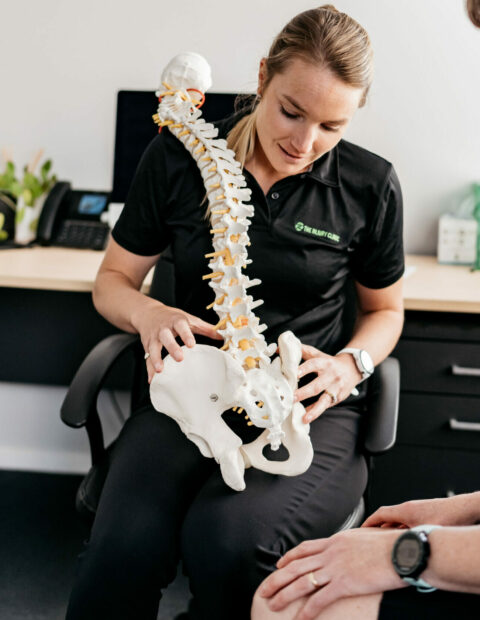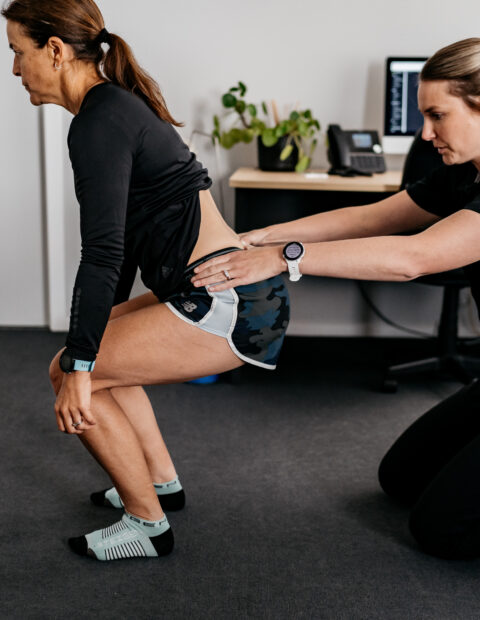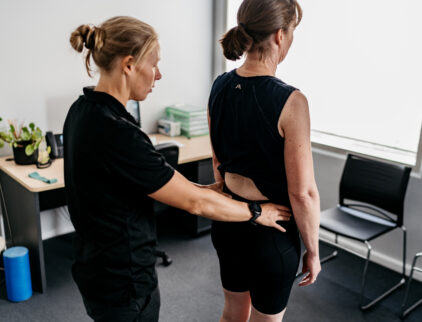
PELVIC AND SIJ PAIN
The pelvis, as a structure, is made up of three joints between the ilium and sacrum and form the base of the trunk. It can be thought of as a stable base for the trunk to move on, and a stable platform for the legs to create force and motion through. Essentially, the pelvis functions to transmit force between the legs and trunk. It is designed to be stiff and is inherently stable.
When using the term pelvic pain, we can be referring to pain that arises anywhere in the pelvic region. Pain originating from the pelvis can also refer into the lower back, hips, legs and sometimes even as far as the feet and ankles! While the pelvis is inherently stable, it is susceptible to the same types of injuries as any other joint in the body.
Most commonly, pelvic pain occurs as a result of a change in the pattern of muscle activation. This altered muscle activation then affects the ability of the pelvis to transfer load. Generally, this occurs secondary to;
- Pregnancy (this is managed slightly differently, please click here for more pregnancy related information).
- A change in biomechanics that affect the loading pattern of the pubic symphysis or sacroiliac joints; for example, work or sport that places a significant load on one side more than the other.
- An imbalance or altered activation of the lumbopelvic muscles.
- An injury ie. significant fall or accident.
When assessing the pelvis, we also have to include the hips, lower back and the upper trunk (thoracic spine, ribcage, diaphragm etc). With consideration of these joints, we also must consider the 35+ muscles that attach directly to the pelvis.



PELVIC-DRIVEN PAIN
It is also important to note that the pelvis commonly will be considered a ‘driver’ for other pain presentations. If a pelvis is dysfunctional, it isn’t able to complete its job (transfer load from the lower limbs to the trunk) which can lead to other structures in the body becoming overloaded and painful. Sometimes it is this secondary structure (an example could be the knee) that actually is the greatest concern and most limiting in day to day life.
It is important to note that some recurrent injuries can be driven by the pelvis. Unless the concerns with the pelvis are managed then it is likely that the injury will continue to be an issue.
WHAT CAN I DO ABOUT MY PELVIC PAIN?
As with any injury, the most important aspect of managing pelvic pain is obtaining an accurate diagnosis. Majority of people who present with pelvic pain will have a significant ‘driver’ which has either caused or contributed to their symptoms developing. Establishing what the driver is and how to best manage it is essential to effectively treat pelvic pain.
WHAT WILL MY TREATMENT LOOK LIKE?
At The Injury Clinic, our management plan will focus on:
- Establishing a diagnosis and understanding of the cause (or driver) of your pelvic pain,
- Starting treatment, which may include;
- Manual therapies,
- Strengthening and retraining exercises,
- Pelvic support belts or tape (if indicated and appropriate).
- Re-introducing or establishing a plan to maintain activity and load,
- Increasing strength in the appropriate muscle groups.



IN SUMMARY
The pelvis can be a complicated area of the body to treat as there are so many different factors that contribute to the development of pain and injury. At The Injury Clinic, we complete an extensive assessment to ensure we correctly identify these contributing factors and can establish an effective treatment plan. If you would like more information, please do not hesitate to call us on (03) 5229 3911 or email us info@theinjuryclinic.com.au.
Schedule your next visit
If you’re interested in booking an appointment with one of our team members, contact our clinic today and we’ll be happy to find time for a consultation.
Schedule Consult